Across a school year, we teach and have students write in multiple genres: informative/explanatory, persuasive, narrative, and research. When teaching narrative writing, teachers often default to having students write a fiction story or a personal narrative/memoir. Both of these types of writing align well with the narrative writing standards. The purpose of this blog post, however, is to show you four spins on narrative writing that you may not have considered before. All four writing unit ideas were created with middle school students in mind.
Idea One: Memoir Vignettes
About this Genre: In this genre, students pick a common thread that each vignette will be about. This could be a person, place, or event. Instead of full memories, students pick moments and sequence three vignettes chronologically over time. When teaching what a vignette is to students I describe it as a glance or snippet into a brief moment in time. I love using vignettes instead of a full memoir because it takes students away from having to describe a full event from beginning to end, which often results in bed-to-bed writing and overuse of the word “then.” As part of this writing genre, I also have a students write a foreword to explain what the common thread is between the three vignettes and the significance of the person, place, or idea their vignettes are about.
The Mentor Text: I’m a big believer in using a mentor text for every writing unit that gives students a visual of what they’re aiming for as their end product. That is why in all of my writing units, I include a mentor text that I’ve written as I’ve gone through the exact writing process I will take students through. I wrote the mentor text for this writing unit about my grandma. She was an intricate part of my childhood, teenage years, and young adulthood. She passed away unexpectedly after having a stroke, and it broke my heart. I chose to write one vignette from my childhood, one from when I was in college, and one from after her passing. Here is the first page of my mentor text.
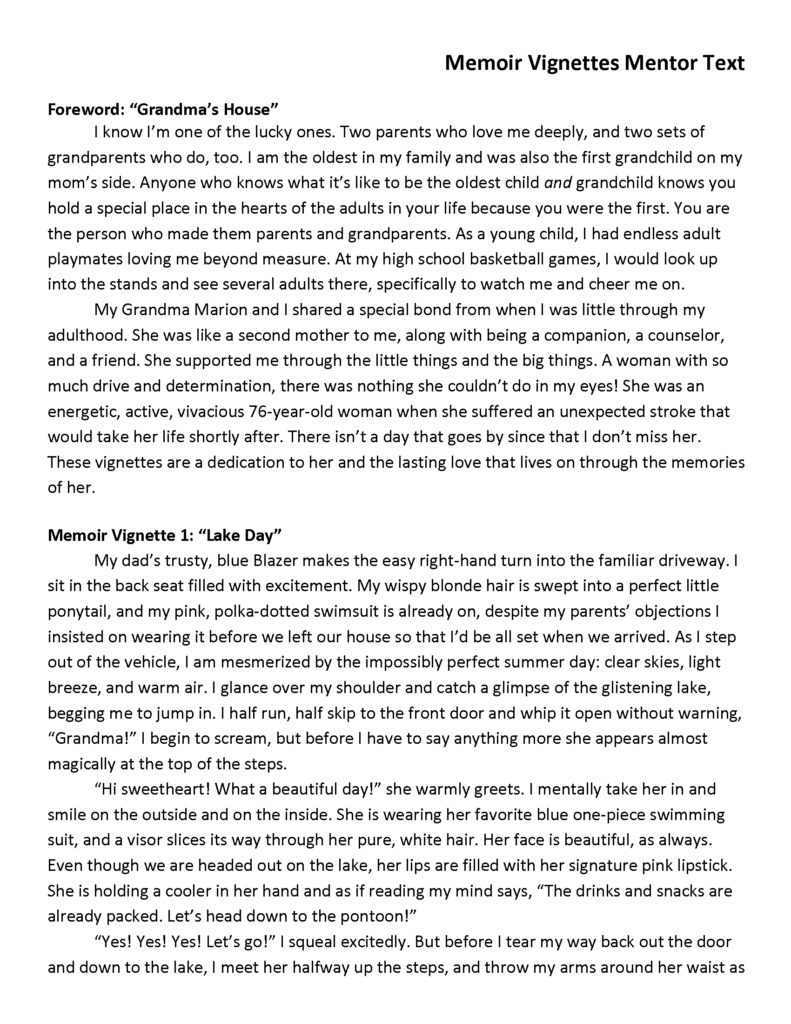
The Unit Plan: So how do you get students from understanding what memoir vignettes are to writing their own? I recommend taking students through the writing process, focusing on one part at a time. Each writing lesson listed in the unit plan below is intended to last one class day. In the Memoir Vignettes Writing Unit linked here, I have a detailed teacher lesson plan, PowerPoint / Google Slides presentation to share with students, and graphic organizers / handouts for each lesson. I’ve also included a variety of rubrics for assessing the final writing product.
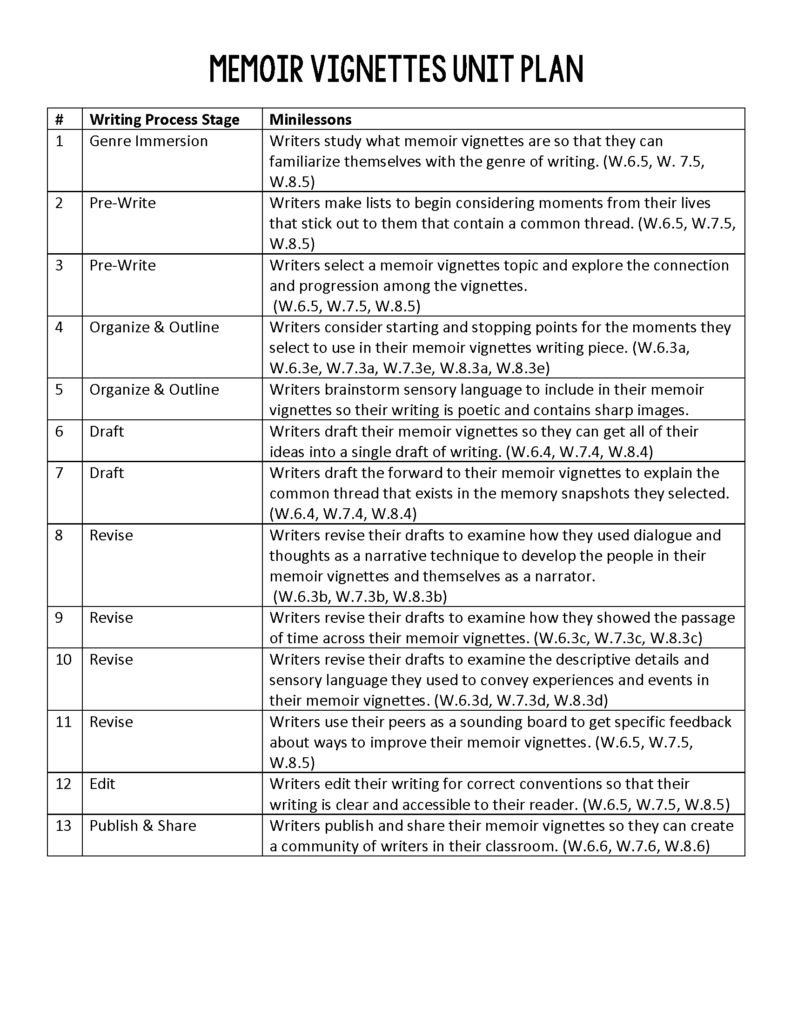
Idea Two: Children’s Book Roll Off
About this Genre: In this genre, students study a popular series of children’s books. Some examples are Scaredy Squirrel, The Bear Books, Little Blue Truck, If You Give a Mouse a Cookie, Pete the Cat, etc. Students then write a book that could be added to the series while studying and mimicking the author’s writing style. It’s also a super fun way to get students to read and enjoy picture books that may or may not be familiar to them.
The Mentor Text: For the mentor text in this writing unit, I wrote a book called The Day the Crayons Went to School based off of Drew Daywalt’s popular series, The Day the Crayons Quit. In the original series by Drew Daywalt, the crayons write letters to Duncan to tell him their complaints with each other and his coloring habits. I thought it would be fun to keep a similar format and theme while having the crayons write letters to Duncan about their experience of going to school with him. Below are two pages of my children’s book mentor text.
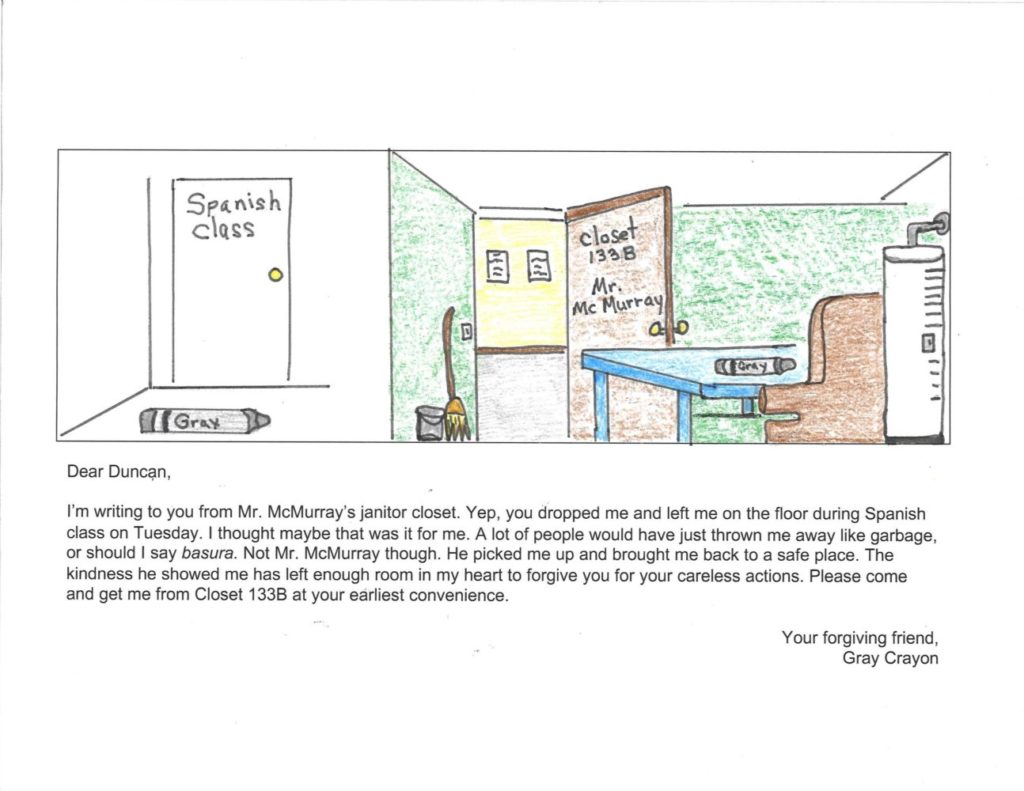
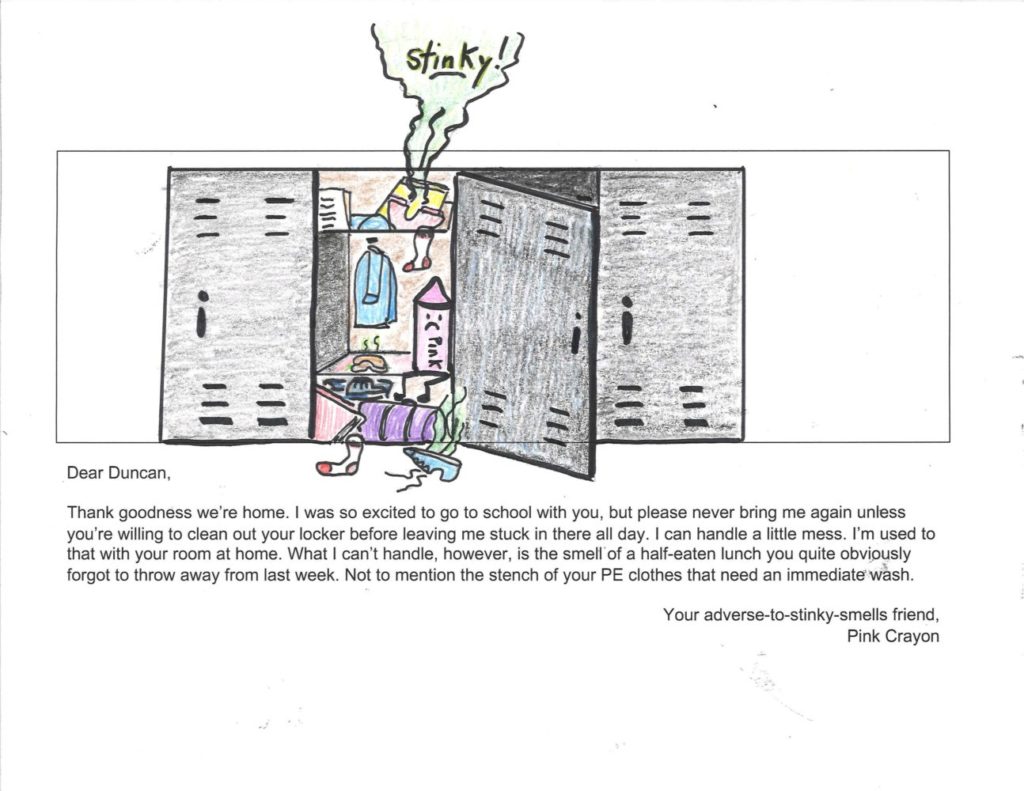
The Unit Plan: So how do you get students from understanding what a children’s book roll off is to writing their own? I recommend taking students through the writing process, focusing on one part at a time. Each writing lesson listed in the unit plan below is intended to last one class day. In the Children’s Book Writing Unit linked here, I have a detailed teacher lesson plan, PowerPoint / Google Slides presentation to share with students, and graphic organizers / handouts for each lesson. I’ve also included a variety of rubrics for assessing the final writing product.
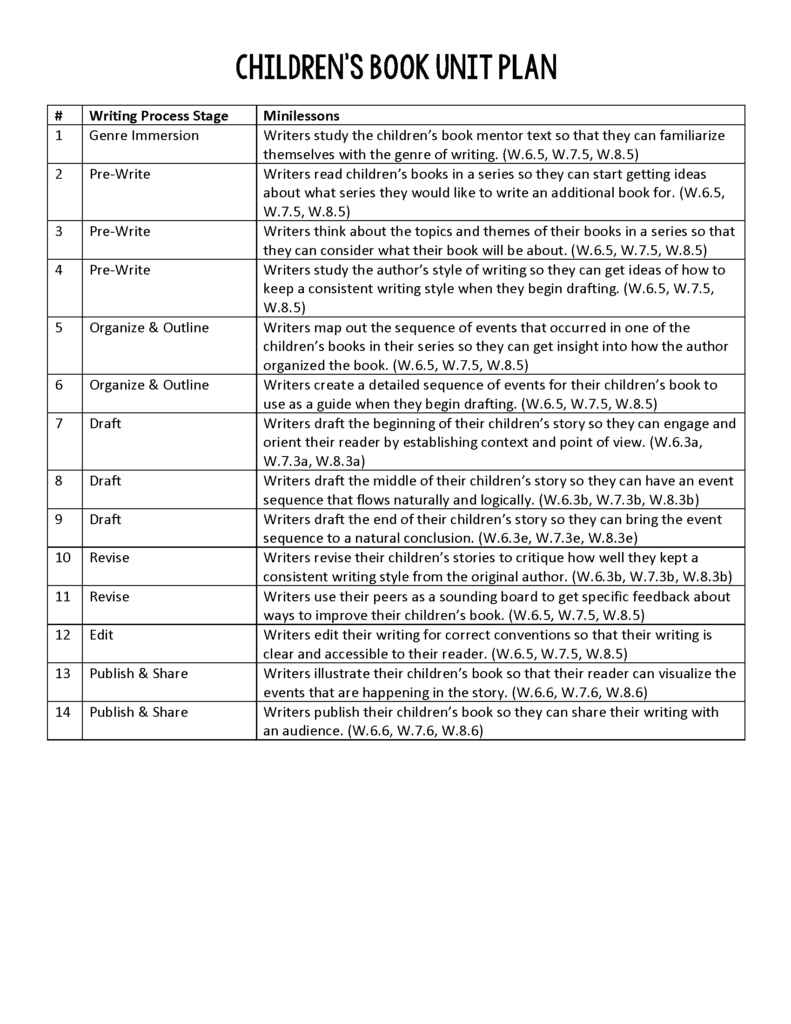
Idea Three: Narrative Nonfiction
About this Genre: In this genre, students pick a news article that they would like to turn into a narrative nonfiction story. They incorporate the nonfiction information from the news article and write a narrative piece by bringing the story to life with dialogue, sensory language, and description of events. The narrative nonfiction is written in chronological order. Students are also encouraged to research the topic of the news article and include text features such as a graph, text box, or author’s note to give their readers more nonfiction context. Narrative nonfiction is a genre that can be written by researching about a person or event. For the purpose of this writing unit, I had students use a news article because it is quick and focused so students can zoom in on the writing aspect of the unit.
The Mentor Text: For the mentor text in this writing unit, I wrote a narrative nonfiction story called, “Jake the Fire Dog.” This story is based on this news article which details the heroic rescue of a puppy who was severely burned. The firefighter who saved the puppy decided to adopt him after his owners never claimed him at the vet. Eventually, the firefighter began to bring the dog to the fire station during his shifts, and Jake become an honorary member of the fire department. In the mentor text, I was able to take the news article and bring it to life in story form. This required me to make inferences and add details and dialogue into the story that I imagined happened. I also included text boxes of nonfiction information related to the topic of each section. This piece was so fun for me as a writer, and students really get to dive into a different form of narrative writing than they’ve ever experienced before. Below are the first two pages from my mentor text, “Jake the Fire Dog.”
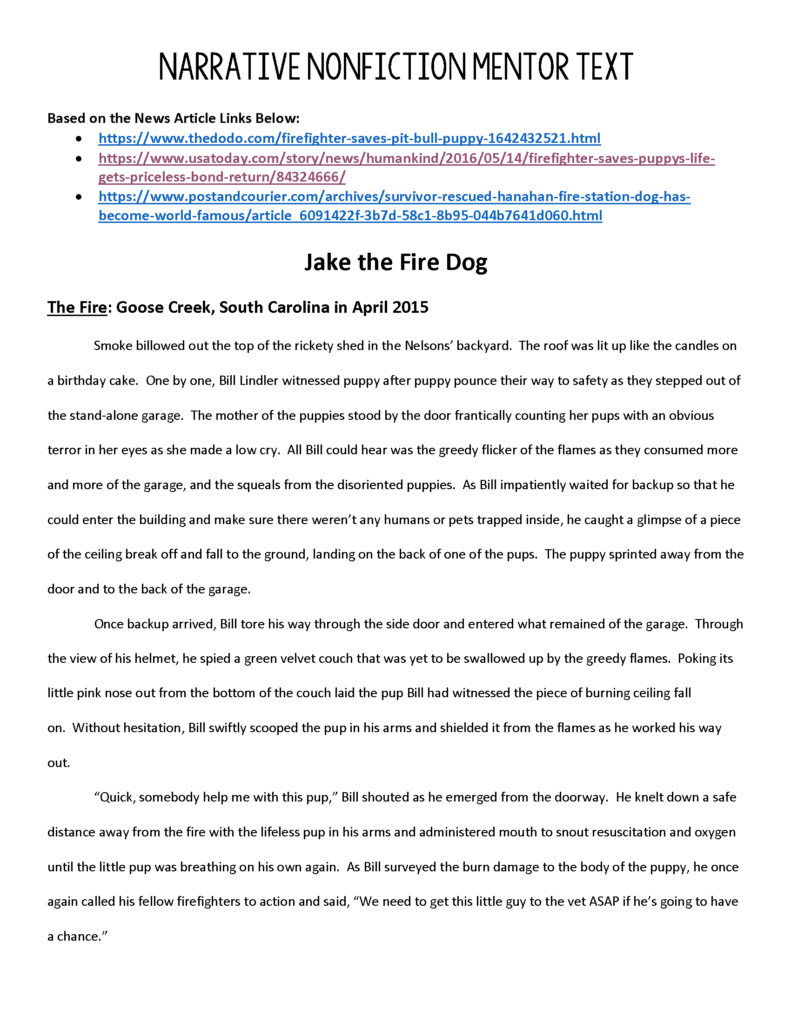

The Unit Plan: So how do you get students from understanding what a narrative nonfiction is to writing their own? I recommend taking students through the writing process, focusing on one part at a time. Each writing lesson listed in the unit plan below is intended to last one class day. In the Narrative Nonfiction Writing Unit linked here, I have a detailed teacher lesson plan, PowerPoint / Google Slides presentation to share with students, and graphic organizers / handouts for each lesson. I’ve also included a variety of rubrics for assessing the final writing product.
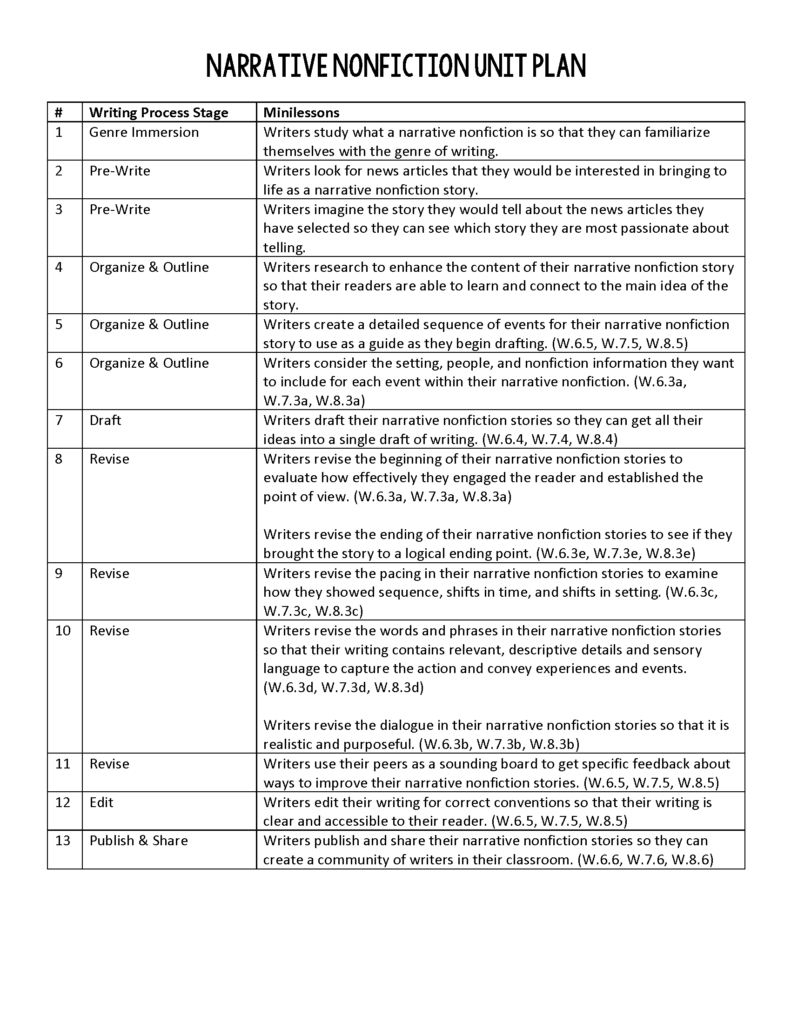
Idea Four: Deleted Scene
About this Genre: In this genre, students pick a “deleted scene” from a fiction book they love. For the purpose of this writing unit, a deleted scene is defined as an event that was implied but did not happen in between scenes, a flashforward or flashback, an extended ending, or an existing scene re-written from a different character’s perspective. Students pick a logical starting and stopping point for the scene and focus on incorporating dialogue and sensory details while also trying out techniques from the author of the fiction book. I love this as an alternative to having students writing a full, open-ended fiction story because it gives more structure while also leaving plenty of room for creativity.
The Mentor Text: For the mentor text in this writing unit, I wrote a deleted scene from the book Freak the Mighty by Rodman Philbrick. In the book, the main character, Max, gets kidnapped from his grandparents’ home by his father who was just released from prison. The book is written from Max’s point of view. The scene I wrote is from Gram’s point of view when she realizes Max has been kidnapped. Below is the first page of my mentor text, which is titled “Two Pairs of Humongous Footprints in the Snow.”
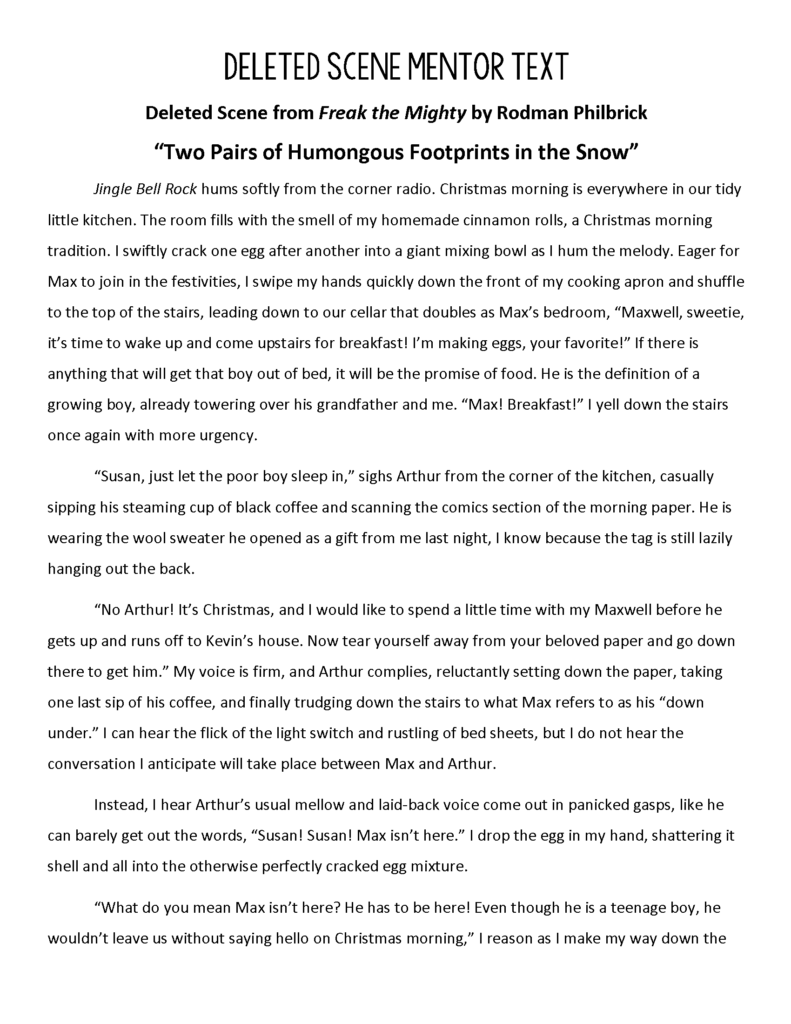
The Unit Plan: So how do you get students from understanding what a deleted scene is to writing their own? I recommend taking students through the writing process, focusing on one part at a time. Each writing lesson listed in the unit plan below is intended to last one class day. In the Deleted Scene Writing Unit linked here, I have a detailed teacher lesson plan, PowerPoint / Google Slides presentation to share with students, and graphic organizers / handouts for each lesson. I’ve also included a variety of rubrics for assessing the final writing product.
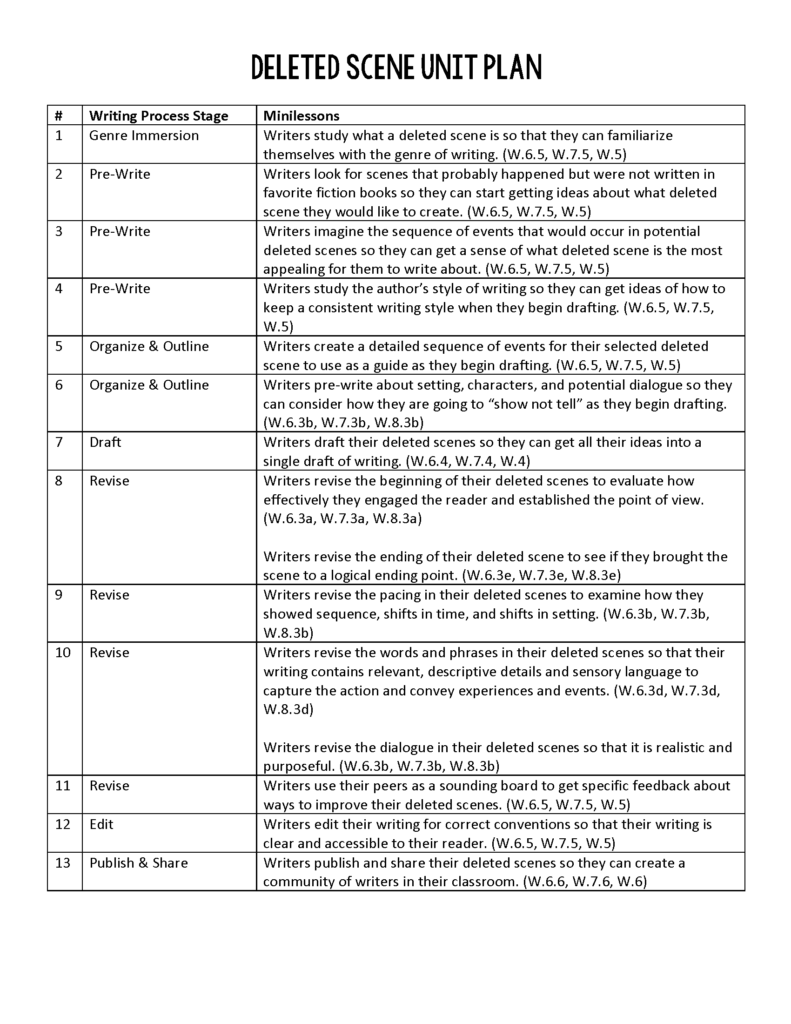
I hope one of those four ideas gave you a little inspiration for ways to spice up narrative writing in your classroom. If you’re interested in finding out more about my writing units, you can view the year-long writing curriculum bundle that includes 11 writing units here. You can also download the freebie that gives you information about the middle school writing units here.





